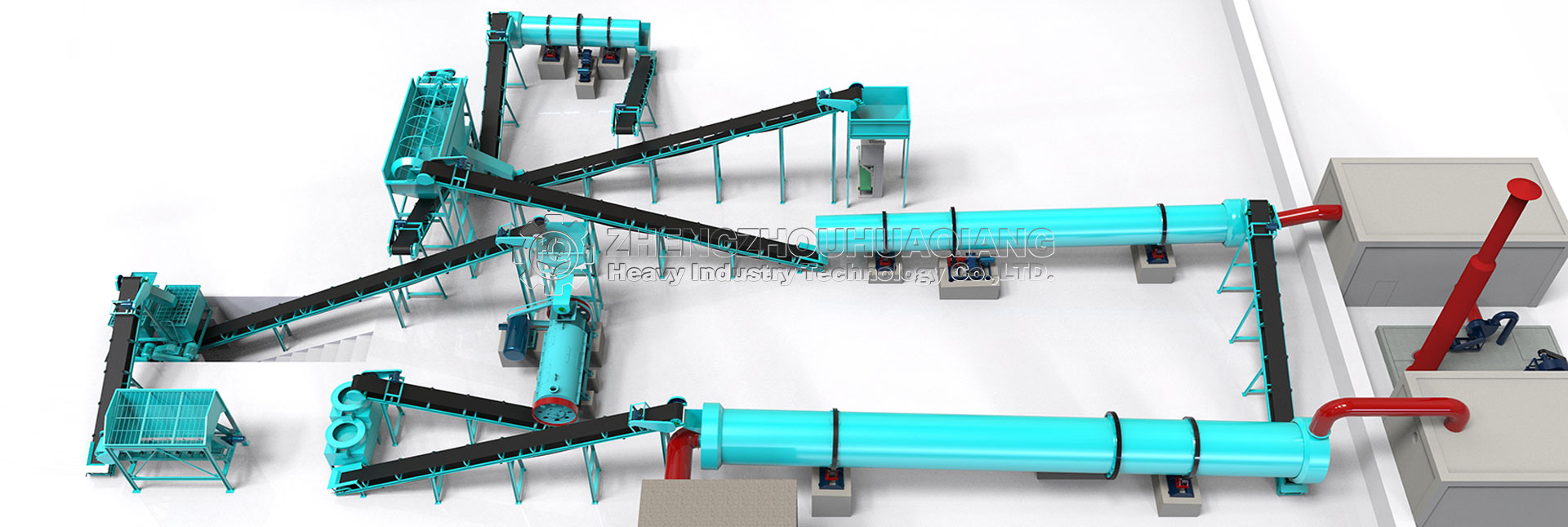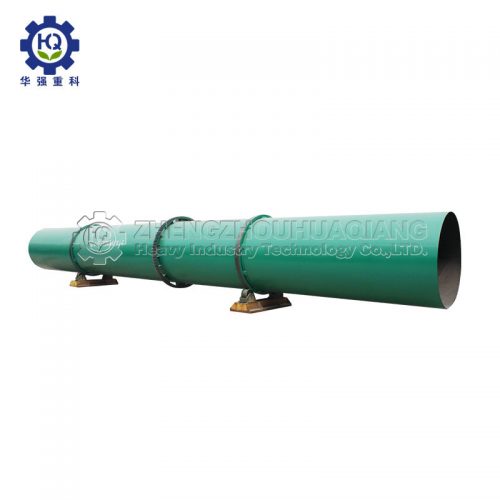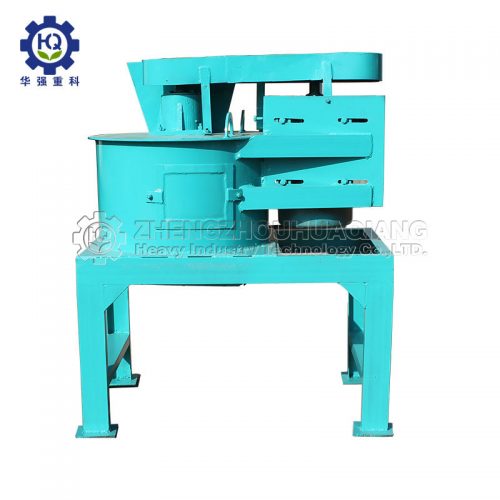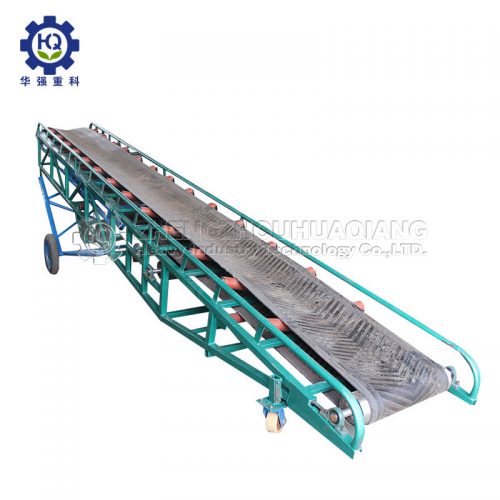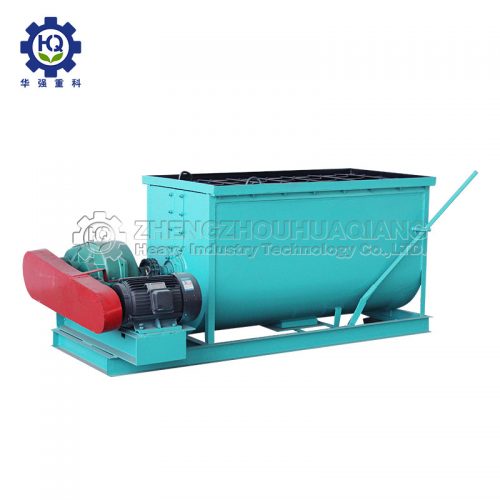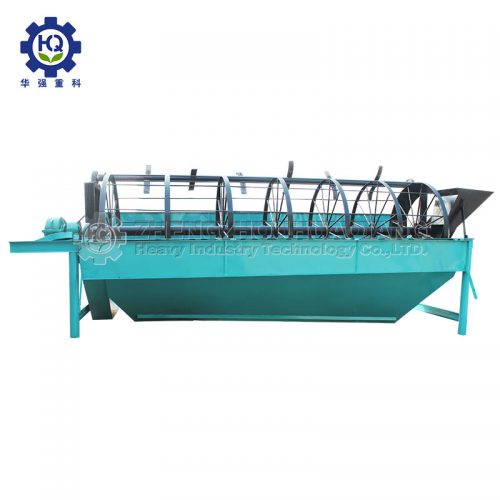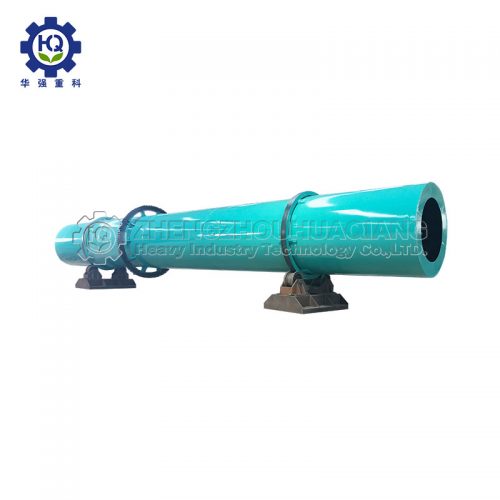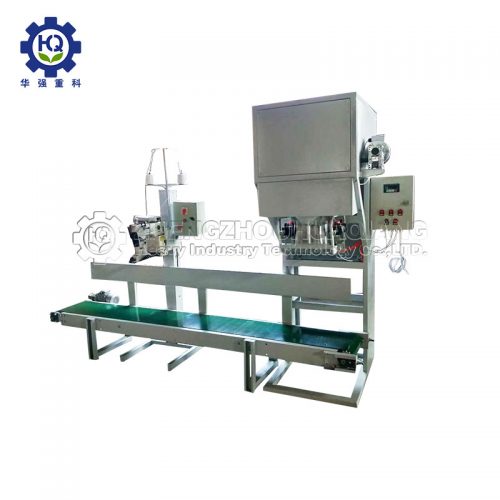The treatment of organic fertilizer production equipment is mainly the fermentation part and the granulation part. Organic fertilizer raw materials are difficult to granulate even if they are fermented well, because the characteristics of organic raw materials are rough, light and low bonding rate. Different organic raw materials have different characteristics, so when selecting equipment, we should be very careful, otherwise not only will affect the output, but also the appearance of the products can not meet the requirements of perfection.
The main equipment of the bio-organic fertilizer production line is as follows:
1. Automatic batching system: automatic batching system is mainly composed of feeding system, weighing device, silo and conveyor belt. And the static batching system has both the speed of Dynamic Batching and the accuracy of ordinary static batching (0.2%).
2. New organic fertilizer granulator: It is designed and manufactured by a new technology of wet continuous pusher granulation. This machine can not only granulate many kinds of organic substances, but also crude fibre materials which are difficult to granulate with conventional equipment.
3. Horizontal mixer: This series of horizontal mixer is a new generation of mixing equipment developed by our company. It has high mixing degree and little residue. It is suitable for mixing organic fertilizer and inorganic fertilizer.
4. Rotary screener: This machine adopts combined screen, which is easy to repair and replace. Its structure is simple, operation is convenient and operation is stable. It is an ideal equipment in the production of compound fertilizer.
5. Conveyor: It is suitable for coal, metallurgy, mining, chemical industry, building materials, wharf, warehouse, construction site and other transportation of bulk materials or bagged goods, especially suitable for use in fertilizer plants, cement plants and other environments requiring manual loading, saving a large number of personnel.
6. Dryer: This machine has the characteristics of beautiful appearance, simple operation, low energy consumption, long life, uniform drying and convenient maintenance. It is an advanced compound fertilizer drying equipment in China.
7. Hot stove: Hot-blast stove boilers adopt backwater ejection technology to solve the problems of crack of tube plate, bulging of lower drum, bursting of water wall, low thermal efficiency, insufficient output and poor adaptability of coal.
8. Packaging machine: Packaging scale mainly consists of automatic quantitative packaging scale (consisting of hopper, feeder, weighing and clamping hopper, kneading mechanism, computer control, pneumatic execution part, etc.) and matching part (conveyor, sewing machine/thermo-closing machine).
Several key factors should be paid attention to in equipment selection of bio-organic fertilizer production line: fermentation mode, organic raw materials, mechanization degree and annual output. The internal quality of organic fertilizer depends mainly on the fermentation part and the formula of the product. The key factors of fermentation are microorganism, C/N ratio, C/P ratio, water content, PH value and aeration control. If a factor is not well controlled, it will result in non-fermentation, incomplete fermentation, or long fermentation time. Like inorganic fertilizer, the formulation of organic-inorganic compound fertilizer products also depends on different soils and crop formulations. If the fermentation is properly formulated, the effect is better than inorganic fertilizer, the cost is lower, and as a green fertilizer, it can also improve the environment of plant survival and soil aggregation.
Organic fertilizer has the advantages of high nutrient content, less by-components and good physical properties. These advantages play a key role in improving fertilizer utilization efficiency, balanced fertilization and promoting high and stable yield of crops. However, the proportion of nutrients in different soils and crops is always the same under the condition of diversity of nutrient elements such as types, quantities and proportions. Therefore, it is better to test the soil before use, to understand the texture and nutritional status of the field soil, and pay attention to the application of the same unit fertilizer, in order to make it play the best effect.

